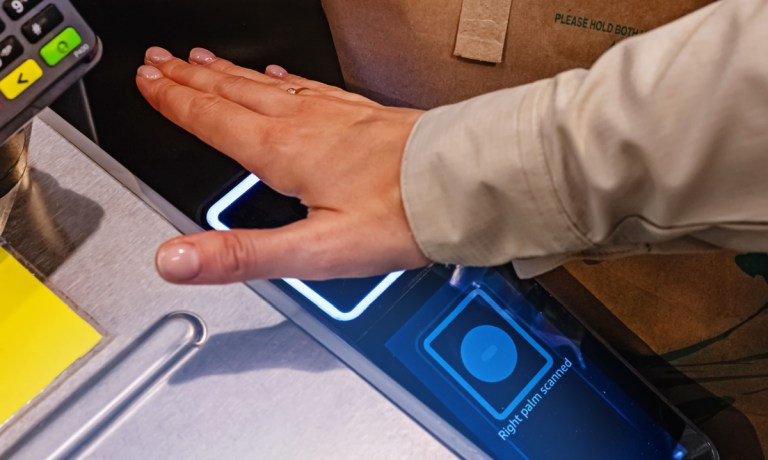Pay-By-Hand Surges as Biometrics Moves Toward Mainstream Adoption

In an era where convenience is king and security is paramount, a payment option that requires nothing more than a simple scan of one’s palm seems like the ideal solution. No fumbling for cards, no unlocking your phone — just a swift, seamless transaction that verifies a user’s identity in an instant.
This innovative approach to payment authentication builds upon existing biometric methods such as facial and voice recognition, as well as fingerprint scanning, to offer consumers and businesses a faster, easier and more secure way to conduct financial transactions.
But how exactly does this technology work? At its core, palm biometric payments rely on unique palm signatures, creating a distinct pattern that is unique to each individual, much like a fingerprint. By capturing and analyzing this pattern using specialized imaging technology, payment systems can verify a person’s identity with a high degree of accuracy.
The benefits of palm biometric payments extend to both consumers and businesses alike. For consumers, the convenience factor is significant as they no longer need to remember PINs or passwords, carry physical cards, or even have their phones on hand. With just a quick scan of their palm, they can complete transactions swiftly and securely, whether they’re buying groceries, dining out or shopping online.
Because of these benefits, it comes as little surprise that most consumers who have used biometrics as an authentication method prefer the technology, according to insights detailed in “Consumer Authentication Preferences for Online Banking and Transactions,” a PYMNTS and Entersekt collaboration.
From a business perspective, palm biometric payments offer increased efficiency and security. Transaction times are reduced, leading to shorter queues in-store and improved customer satisfaction. For instance, following a biometric scan, employees may greet guests by name and access their order history, reflecting restaurants’ endeavors to enhance customer experiences through personalized interactions.
Moreover, the risk of fraud is significantly minimized, as biometric data is inherently more difficult to replicate or steal compared to traditional forms of authentication like passwords or PINs.
Taking Biometric Payments Mainstream
The adoption of palm biometric payments is gaining momentum across various sectors, spearheaded by retailers, financial institutions and tech firms.
Leading the charge, Amazon introduced Amazon One Enterprise last November, a corporate iteration of its palm-based identity service tailored for authenticating employees and authorized individuals entering locations such as offices, airports, hotels and educational facilities.
By replacing traditional methods like badges, fobs, PINs and passwords, Amazon aims to address common security vulnerabilities inherent in traditional authentication methods, such as loss, theft or being easily guessed or forgotten.
Amazon’s corporate initiative follows its announcement in July to deploy pay-by-palm technology across all of its 500-plus Whole Foods locations by the end of 2023, offering consumers a convenient and secure payment option, with added benefits for Amazon Prime members.
In a similar vein, WeChat Pay has collaborated with the Beijing Subway system to introduce palm-based payments on the high-speed Daxing International Airport Line in China. The pilot program, initiated in May of last year, simplifies commuter experiences by allowing passengers, aged 14 and above, to glide through automated ticket gates with a quick palm scan.
And more recently, Visa showcased its pay-by-palm biometric payment technology at the unveiling of its revamped Singapore Innovation Center earlier this month, as detailed in a Feb. 22 press release.
Kunal Chatterjee, head of innovation at Visa Asia Pacific, emphasized the technology’s potential to revolutionize the retail experience in an interview with Singaporean tech news site Hardwarezone, while pointing to challenges such as regulatory approval and variations in consumer acceptance across different markets as reasons why widespread adoption may take some time to materialize.
“However, the current pace of integration and acceptance of new technologies that we are seeing is very encouraging,” Chatterjee noted, “and we expect to see biometric payments becoming more mainstream within the next decade.”

